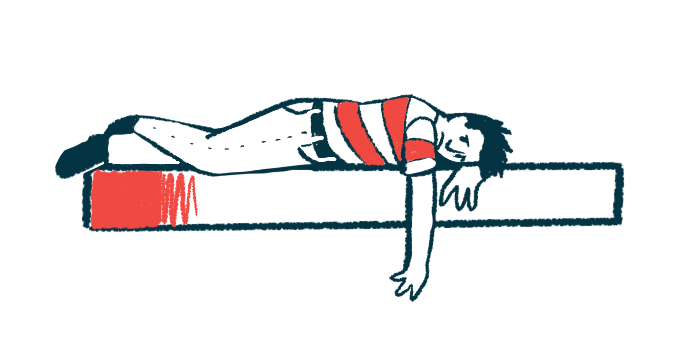Bodily function problems found to impact quality of life in NMOSD
Autonomic dysfunction symptoms also tied to worse depression and fatigue

Symptoms related to the autonomic nervous system, which controls automatic bodily function, have a significant impact on the quality of life of people with neuromyelitis optica spectrum disorder (NMOSD), according to a questionnaire-based study.
All patients in the study experienced some autonomic system-related symptoms, or autonomic dysfunction, and most of these problems were reported significantly more frequently by patients than by healthy people.
Besides affecting quality of life, greater autonomic dysfunction was significantly associated with worse anxiety, depression, sleep, and fatigue.
“These findings … suggest that the evaluation and management of autonomic dysfunction are of great significance for improving the quality of life in NMOSD patients,” the researchers wrote.
The findings were published in the journal BMC Neurology, in the study “Impact of dysautonomic symptom burden on the quality of life in Neuromyelitis optica spectrum disorder patients.”
Automatic bodily function issues linked to worse life quality for patients
NMOSD is a progressive disease characterized by the production of antibodies that mistakenly attack healthy parts of the nervous system, causing inflammation in the optic nerve, which sends signals between the eye and the brain, and the spinal cord.
This results in a wide range of symptoms, from eye pain and vision impairment to muscle pain and weakness, loss of sensation, and breathing difficulties.
Emerging evidence suggests that NMOSD also affects the autonomic nervous system. One study reported that 74.1% of NMOSD patients experienced symptoms related to autonomic dysfunction, which correlated with clinical and MRI data.
“However, current research on autonomic dysfunction in NMOSD has not been able to explore its correlation with patients’ life status (depression, anxiety, sleep, fatigue), and the extent of its impact on patients’ quality of life,” the researchers wrote.
To fill this knowledge gap, a team of researchers in China investigated autonomic dysfunction burden in 63 NMOSD patients — 50 women and 13 men. The researchers analyzed the potential link to patients’ demographic and clinical features, as well as quality of life.
Among patients, close to half (41.3%) had both optic nerve and spinal cord involvement. Spinal cord inflammation only was found among 34.9%, of patients, while the remaining 23.8% had only optic nerve involvement. A group of 63 age- and sex-matched unaffected people were included as controls.
All participants completed COMPASS 31, a questionnaire covering six domains of autonomic dysfunction. COMPASS 31 scores range from 0 to 100, with higher scores indicating more severe symptoms.
The domains were: bladder problems; vascular issues; problems in the production of bodily fluids, such as sweat, tears, and saliva; gastrointestinal symptoms; pupil dilation deficits; and orthostatic intolerance, which refers to symptoms of dizziness after standing up due to a drop in blood pressure.
All NMOSD patients reported some form of autonomic dysfunction, with the most common being gastrointestinal problems (95.2%), pupil dilation issues (92.1%), and bodily fluid-related symptoms (90.5%). These were followed by bladder (77.8%) and vascular problems (66.7%), and orthostatic intolerance (63.5%).
The patients’ mean COMPASS-31 total score was significantly higher than that of healthy controls (17.2 vs. 11.6). This was true as well for all COMPASS-31 domains, except for gastrointestinal symptoms, for which there were no significant group differences.
These findings suggest that NMOSD patients are “more likely to suffer orthostatic intolerance, [vascular] symptoms, [bodily fluid] symptoms, bladder symptoms, and [pupil-related] symptoms than the general population, while the gastrointestinal symptoms in NMOSD patients might not be disease-related,” the team wrote.
Symptoms of fatigue also linked to worse bodily function
When focusing on the patient group, the researchers found that COMPASS-31 total scores were significantly higher among those with both optic nerve and spinal cord disease versus those with either one.
Gastrointestinal symptoms were more frequently reported by women than men, and vascular issues were more common in patients treated with rituximab versus mycophenolate mofetil (Cellcept) or azathioprine. All these therapies work by suppressing the immune system and are often used off-label for NMOSD. Off-label denotes the use of a treatment for a condition other than that for which is received regulatory approval.
In addition, worse overall autonomic dysfunction was significantly associated with more disease attacks, longer disease duration, more spinal cord lesions, and worse disability, as assessed with the expanded disability status scale.
NMOSD patients experiencing more autonomic system-related symptoms also reported significantly more sleep problems and worse fatigue, as well as more anxiety and depression, as indicated by the hospital anxiety and depression scale.
These findings … suggest that the evaluation and management of autonomic dysfunction are of great significance for improving the quality of life in NMOSD patients.
Further statistical analysis showed that greater autonomic dysfunction was independently associated with worse disability, more spinal cord lesions, and worse fatigue.
Moreover, a higher total COMPASS-31 score independently correlated with lower scores in all subsections of the 36-item short-form health survey, indicating worse quality of life. These subsections include physical functioning, physical role fulfillment, bodily pain, general health, vitality, social functioning, emotional role fulfillment, and mental health.
These findings highlight that NMOSD patients’s autonomic dysfunction burden is “much more severe than [controls],” and “an independent influencing factor of the patients’ quality of life,” the researchers wrote. The team also noted that these new data “might help us identify patients with a high risk of autonomic dysfunction.”








